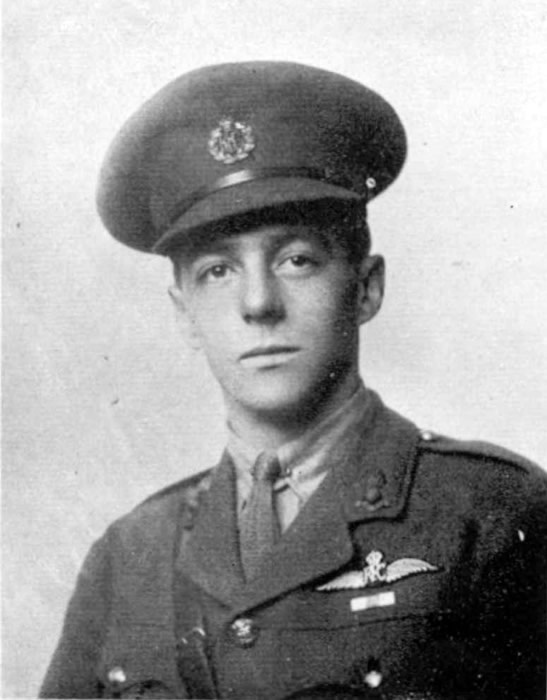
Rainsford Balcombe-Brown
56th Squadron, Royal Air Force
Killed in action, 2 May 1918.
Born in Wellington in 1895, Rainsford Balcombe-Brown was one of Eliza and Edward Balcombe-Brown’s five children. Edward was a lawyer and the family were prominent members of the Wellington community. Balcombe-Brown grew up in Thorndon and was educated at Mrs Swainson’s School in Fitzherbert Terrace. He then spent time at Wanganui Collegiate before following his older brother William to Oriel College at Oxford University.
Balcombe-Brown was studying at Oxford when war broke out in 1914. Like his brother, he was quick to enlist, securing a commission as a second lieutenant in the Royal Field Artillery, part of the British Army. He departed for the front in October and was soon attached to the Royal Flying Corps (RFC), a precursor of the Royal Air Force. In a letter home Balcombe-Brown described his first flight, during which he neglected his role as an observer because ‘I was so engrossed in looking all around … and enjoying to the full a new sensation.’[1]
In May 1915 he completed his training and was granted his ‘wings’. As an RFC pilot, he made reconnaissance flights and bombing attacks behind enemy lines, and took part in dogfights. In the lead-up to the 1916 Somme offensive, Balcombe-Brown, now a lieutenant, was ordered to carry out balloon-busting and bombing sorties. Although flying in an unfamiliar aeroplane, he managed to bring down an enemy kite balloon, an action for which he was awarded a Military Cross.
Balcombe-Brown continued to excel and by 1918 he had been promoted to major and was commanding officer of 56 Squadron. On 2 May 1918 he participated in a special mission to observe the lines. When enemy planes were spotted, Balcombe-Brown’s squadron engaged them in combat. The British pilots gained the upper hand, but their commander disappeared during the fight.
Balcombe-Brown was originally reported missing, but then German aviators dropped a note over the British lines announcing his death but giving no details. He was the highest-ranking New Zealand airman killed on active operations during the First World War. He is buried at Carnoy Military Cemetery on the Somme. In New Zealand, he is remembered, along with his parents and brother William, who also died in the war, on a memorial plaque at Old St Paul’s Church in Wellington.
Further information
Auckland War Memorial Museum Online Cenotaph record - Balcombe-Brown
Commonwealth War Graves Commission record - Balcombe-Brown
'For service', Evening Post, 16 October 1914, p. 7
'Scouting in the air', Press, 22 May 1915, p. 13
'British Casualties', New Zealand Herald, 9 July 1915, p. 8
'Lieutenant W. E. Balcombe Brown', Press, 10 July 1915, p. 6
'Personal items', New Zealand Herald, 13 September 1916, p. 9
'Officer reported missing', New Zealand Herald, 8 May 1918, p. 4
'Major R. Balcombe Brown', Otago Daily Times, 8 June 1918, p. 8
Balcombe-Brown's Military Cross citation – from the Supplement to the London Gazette, 25 July 1916, p. 7431
Old St Paul's - Remembering the Balcombe-Brown brothers
Adam Claasen, Fearless: the extraordinary untold story of New Zealand’s Great War airmen, Massey University Press, Auckland, 2017

Community contributions